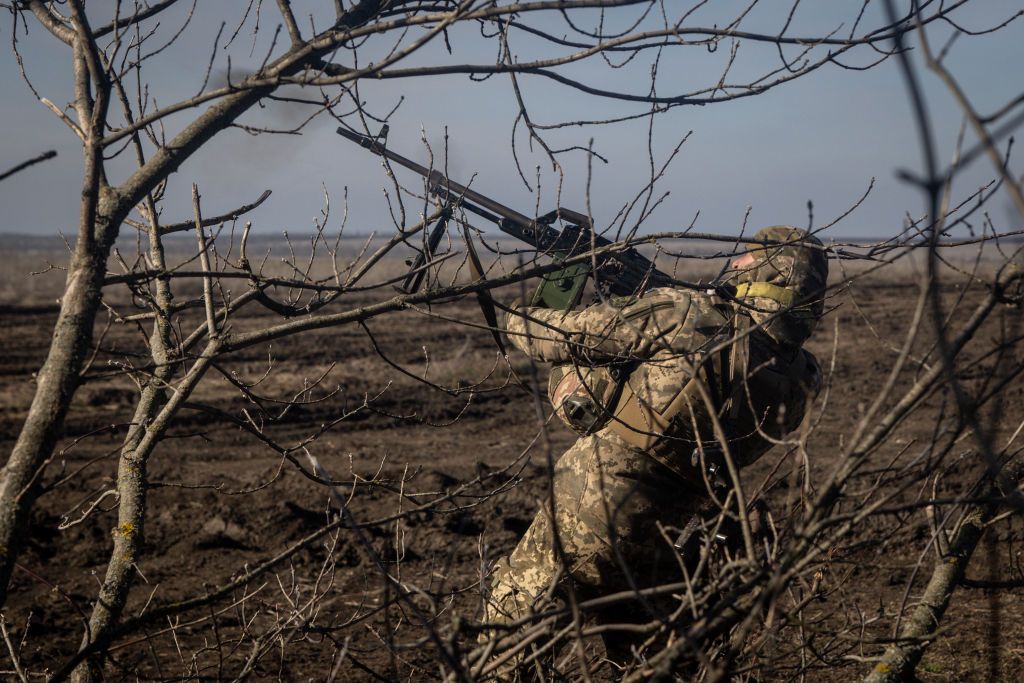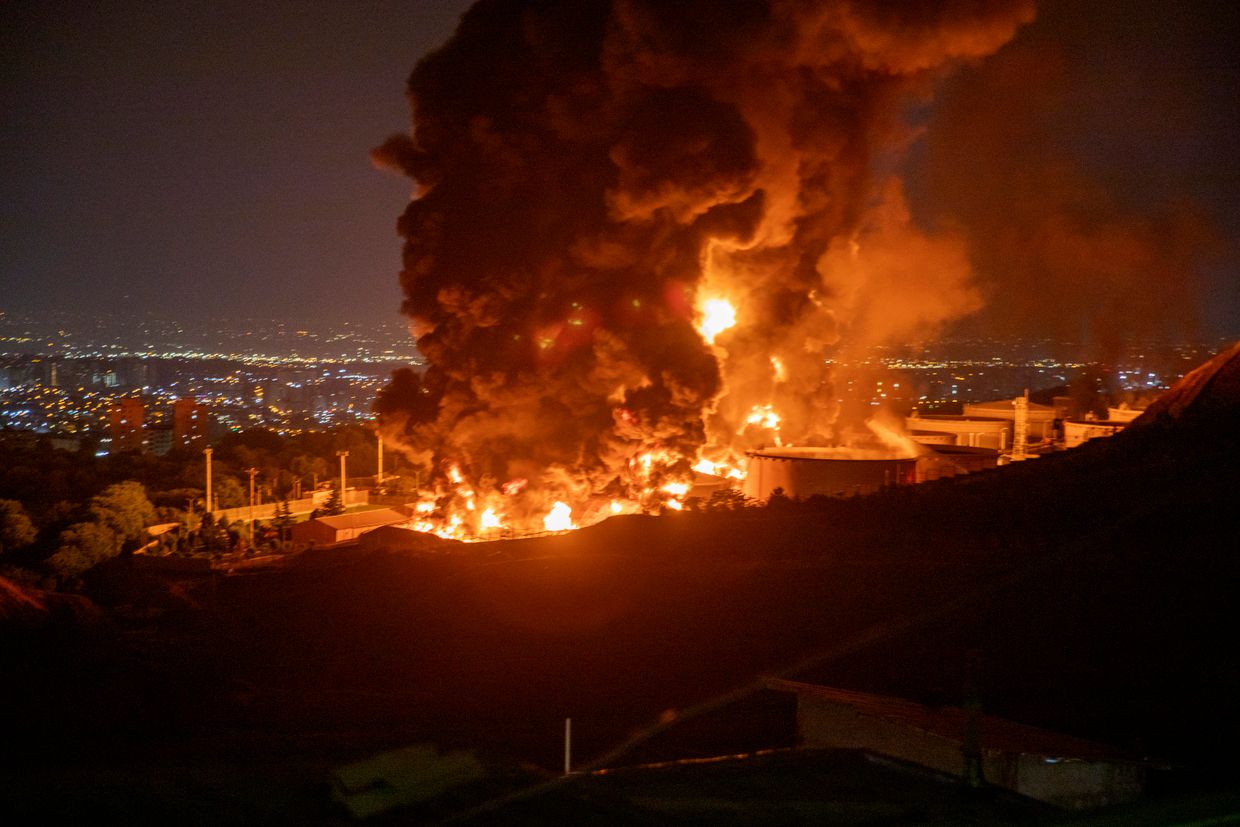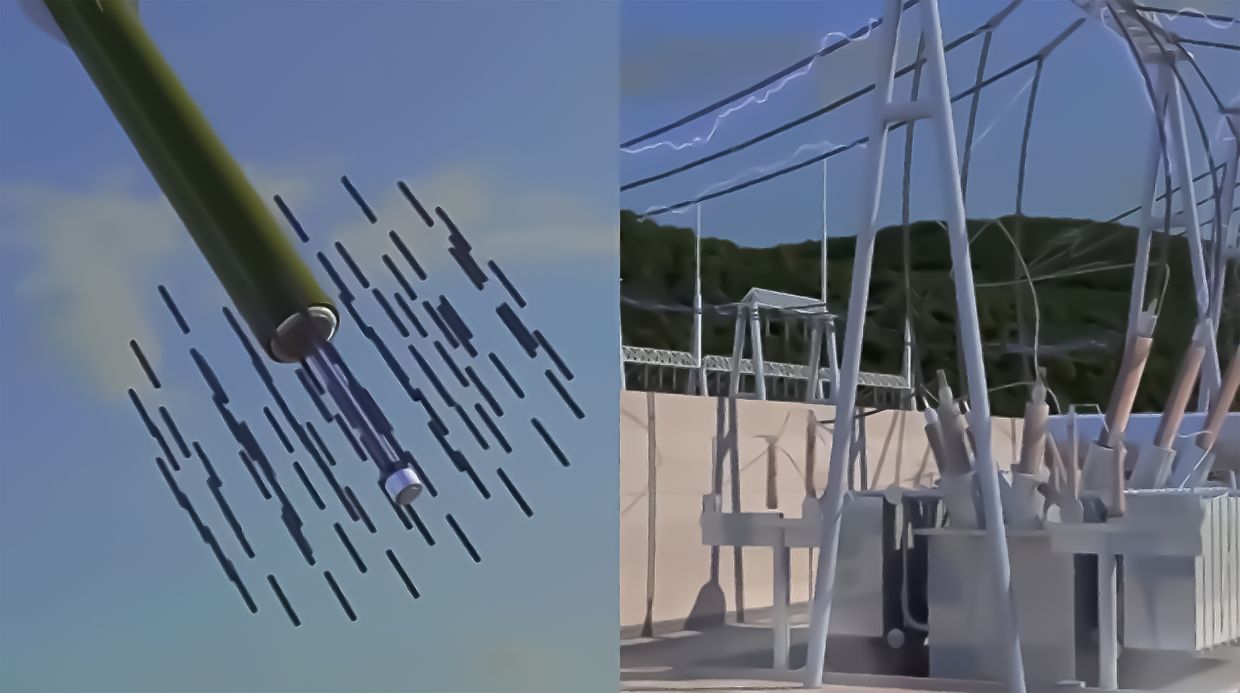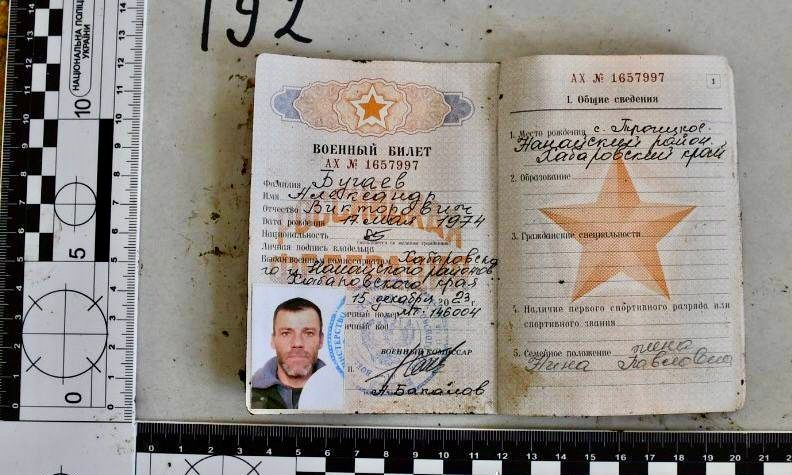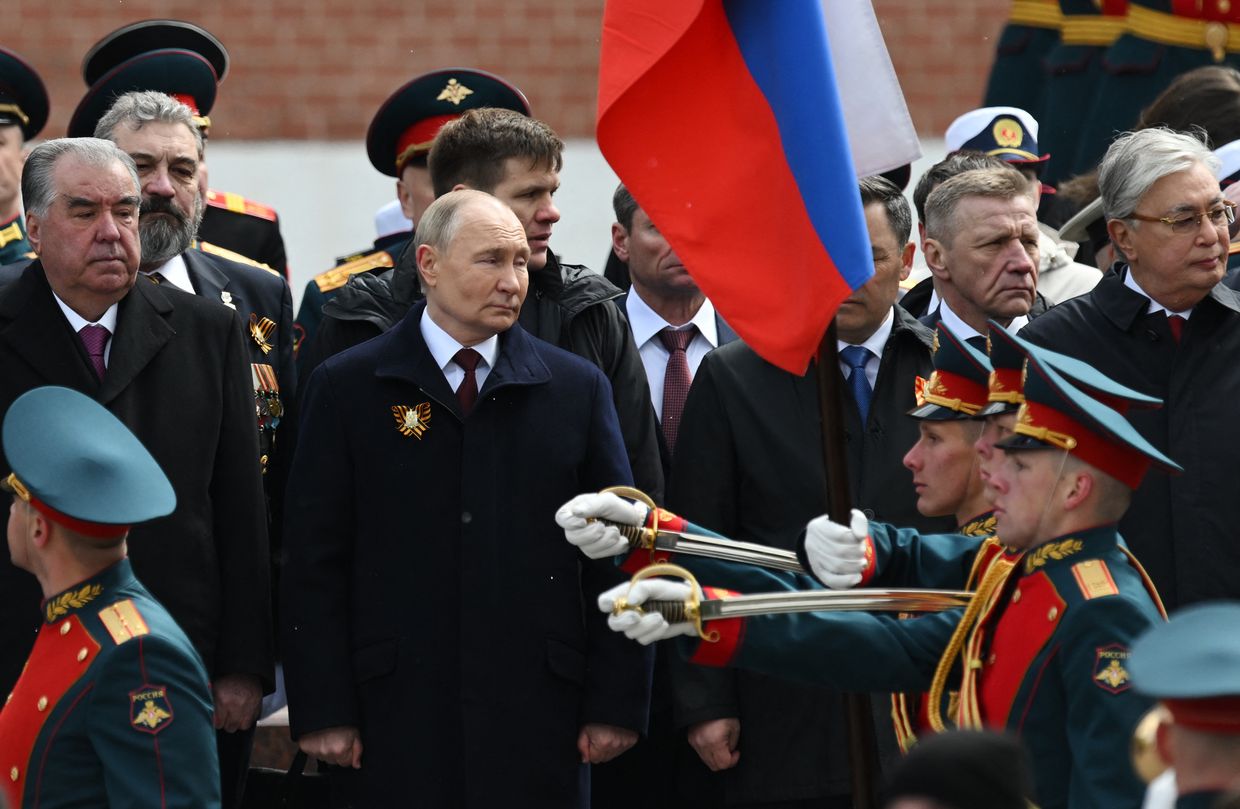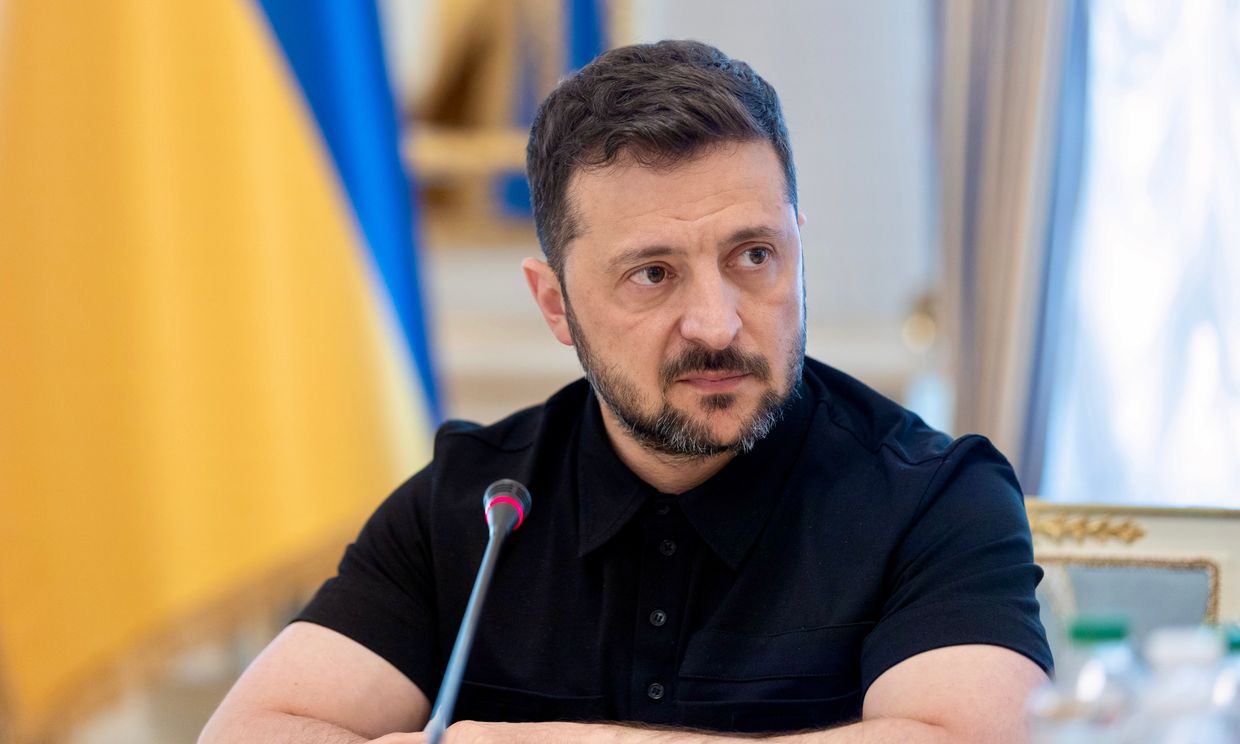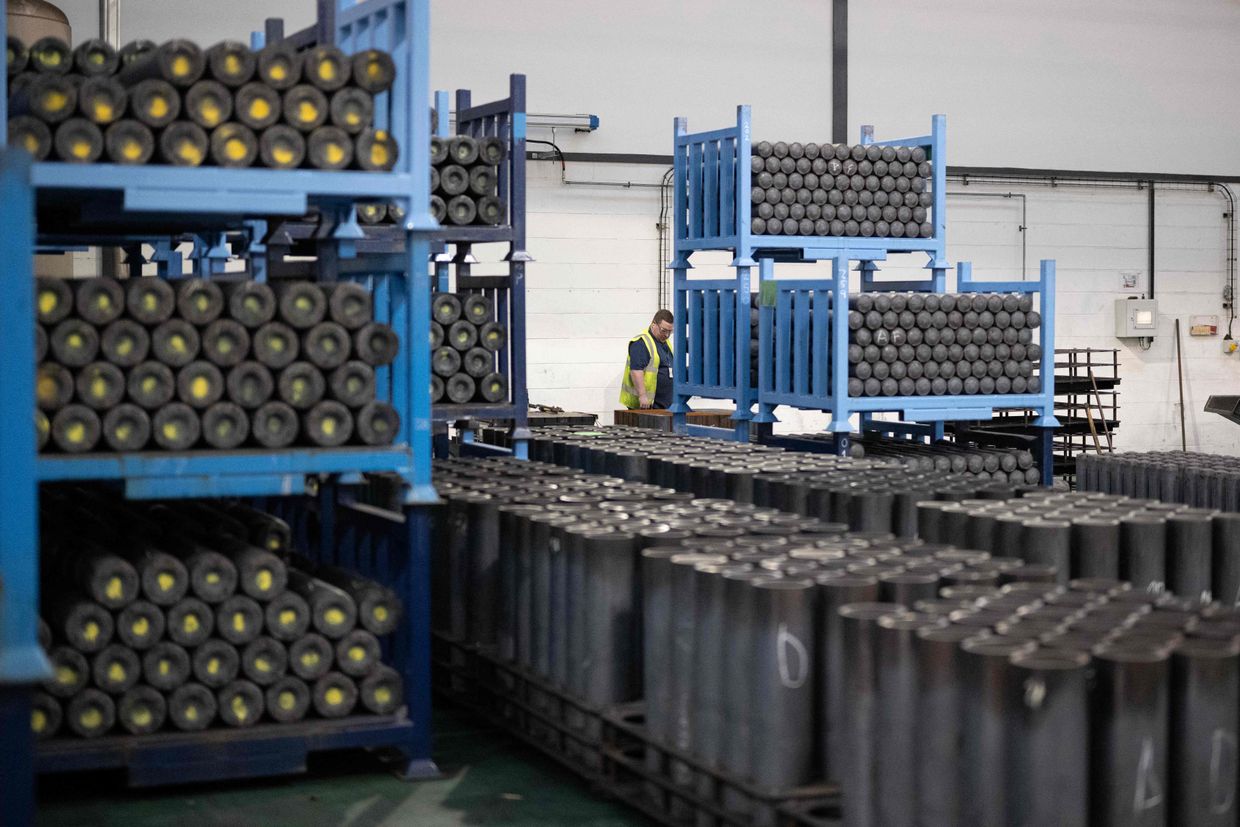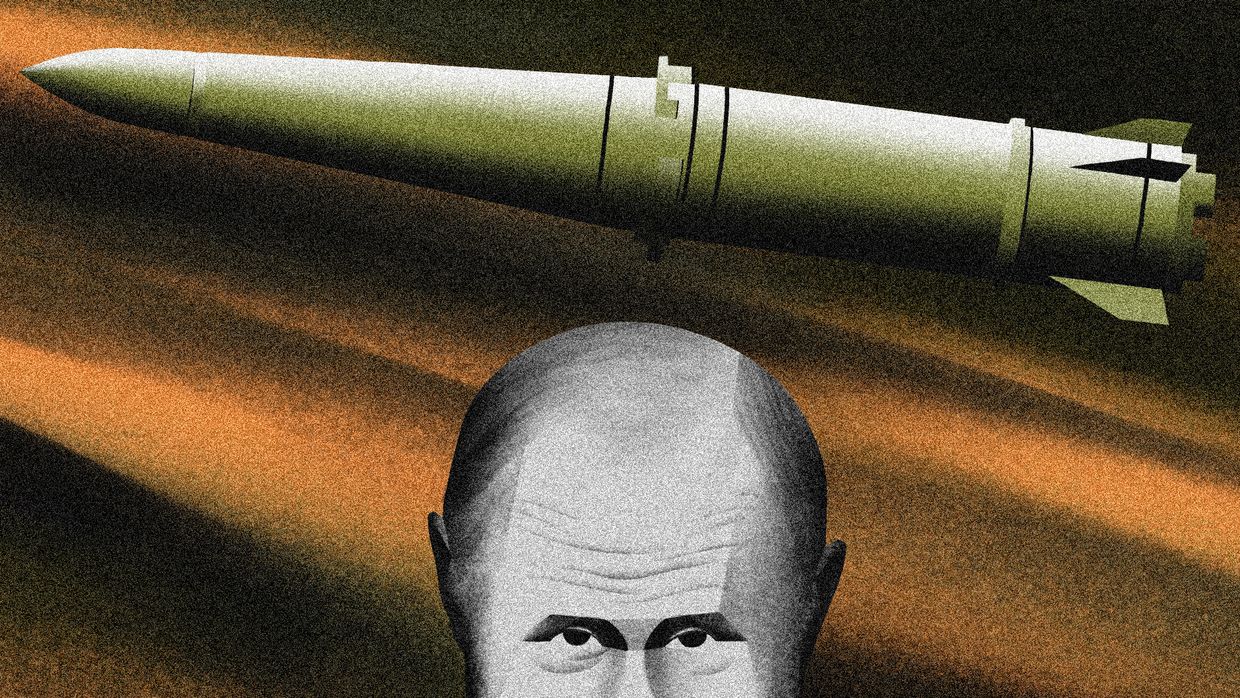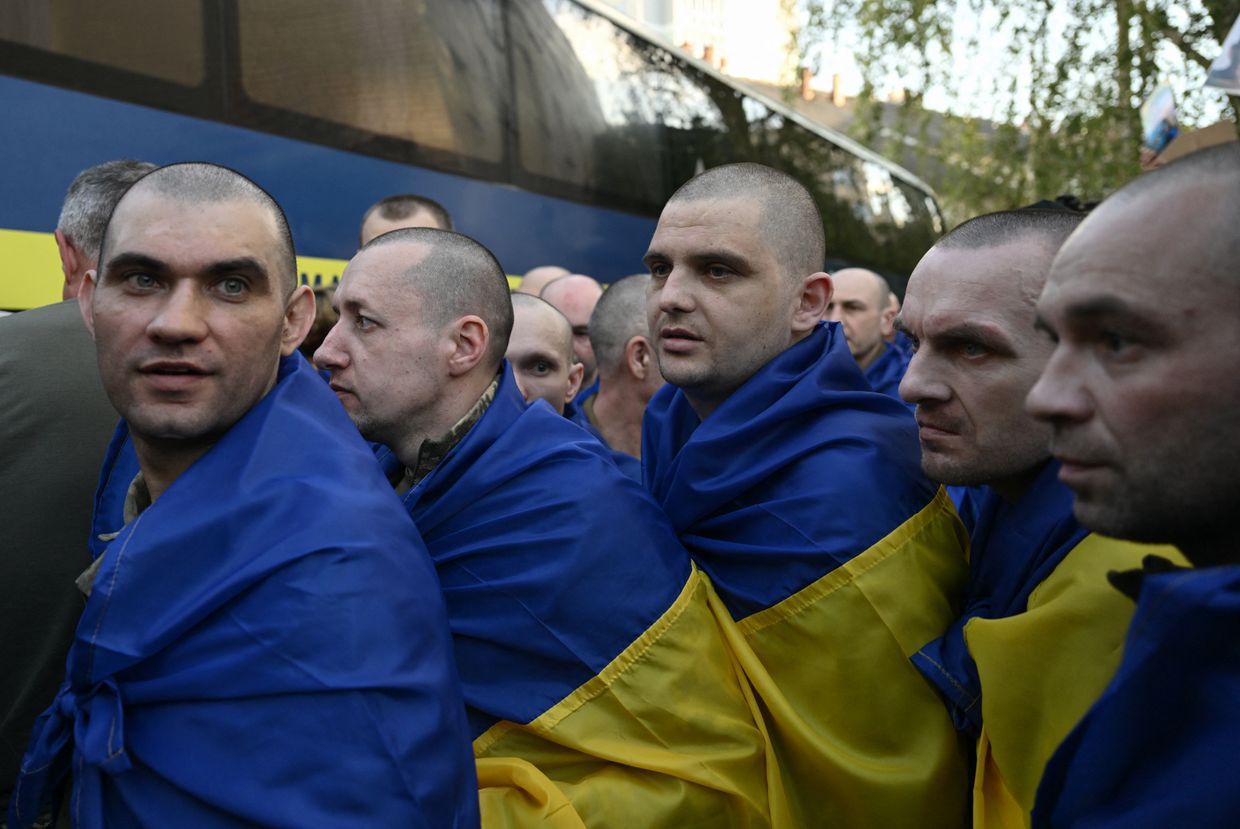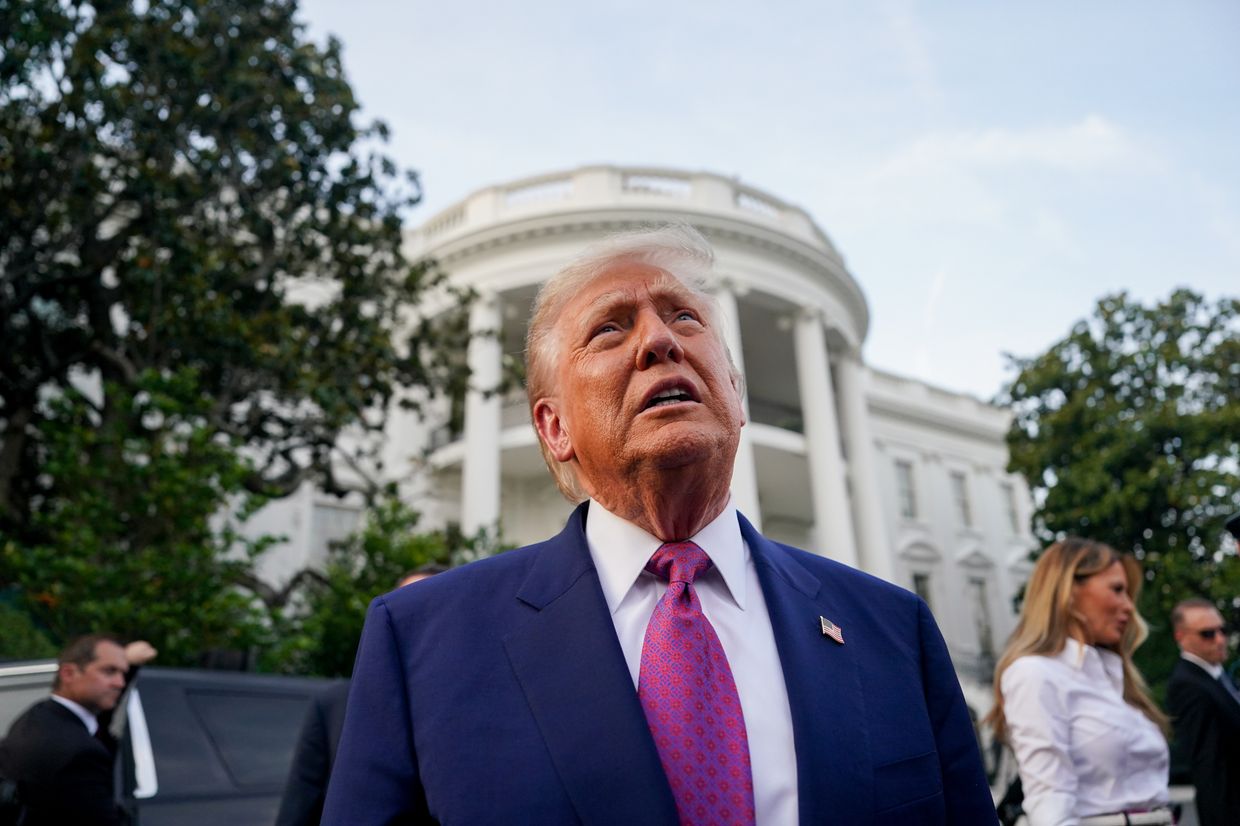Drone combat in Russia’s war against Ukraine is changing warfare. Unmanned aerial vehicles (UAVs) are being used at an unprecedented scale for which neither the Ukrainian nor the Russian armies were quite prepared. Both militaries have made significant progress with respect to drones, sometimes modernizing them in the midst of battle on the front.
Let’s take a look at the evolution of Russia’s drone arsenal.
Forposts
The Forpost, a licensed replica of the Israeli IAI Searcher, is the most well-known of Russia’s drones from the 2010s. Produced at the Ural Plant of Civil Aviation since 2012, Russia has claimed it can produce the drone without imported components. Russia has also started testing the Forpost-R, a variant that can remain airborne for 18 hours and drop small, laser-guided bombs.
Russia likely only has around 30 Forpost systems, each comprised of three to six drones. The Russian military has used Forpost drones against Ukraine since the start of its invasion in 2014. After the full-scale war broke out in 2022, they were most extensively used on the southern flank by the Russian Black Sea Fleet’s aviation to target Ukrainian Bastion coastal defense missile systems. Russia also used Forpost drones to target Kyiv from Belarus in the spring of 2022.
The Russian military has lost six Forpost drones as of early April, according to the Dutch OSINT defense website ORYX.
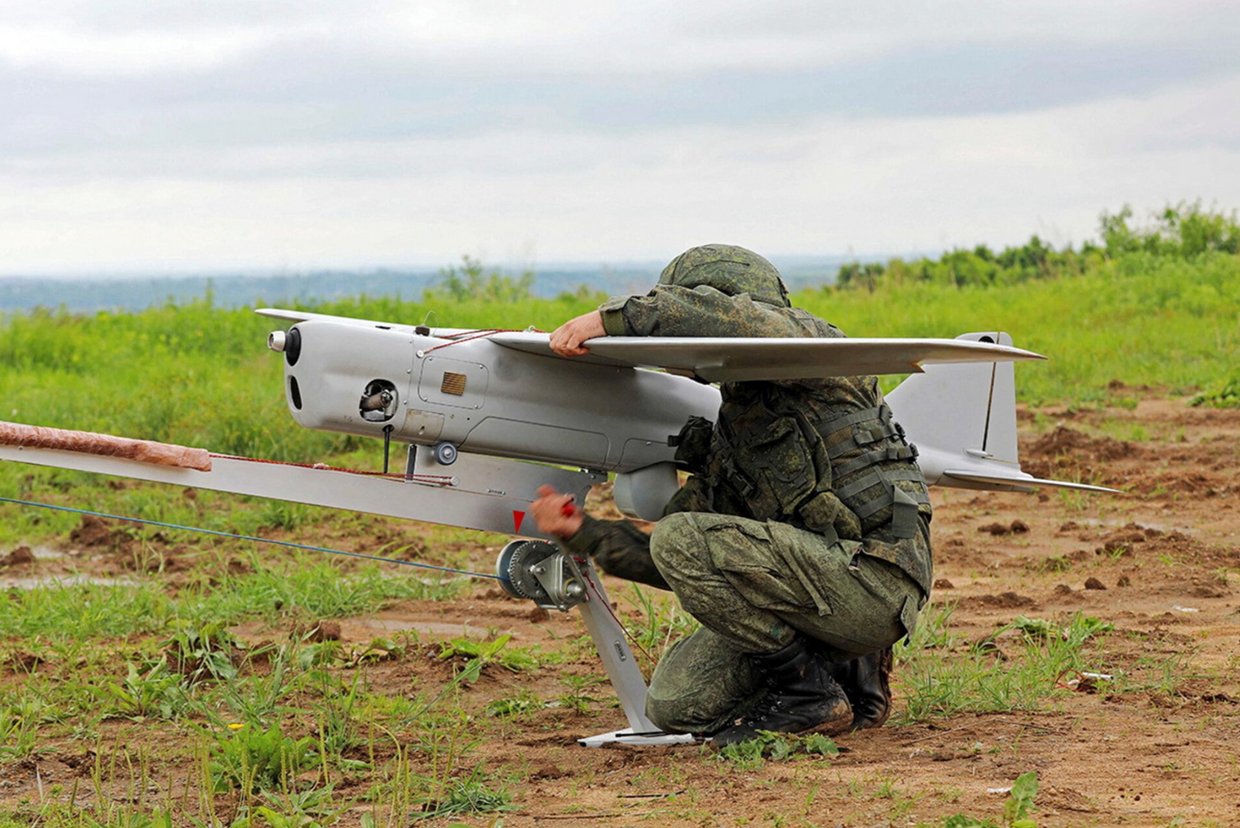
Orlan-10s
More abundant in Russia’s drone arsenal is the Orlan-10, which the Russian military started to use in 2013. Mass-produced due to its simple and cheap design, some sources indicate that it only lasts 10-20 flights.
The Russian military’s drone-based electronic warfare system, the Leer-3, uses Orlan-10s alongside jammers to disable cellular networks. The Orlan-10 was also used at the start of the full-scale war for reconnaissance and artillery fire adjustment.
The threat posed by these small drones has become a real problem for the Ukrainian military, which tries to neutralize them with machine guns, electronic warfare, and anti-aircraft missile systems.
Estimates suggest Russia had around 1,500 Orlan-10s before the full-scale war started, after which it ramped up production to 200-300 drones in 2022. However, as Ukraine ramped up its drone countermeasures, the Orlan-10 became virtually obsolete. It has gradually been replaced by the more advanced ZALA and SuperCam drones. The Russian military has lost around 200 Orlan-10s as of early April, according to ORYX.
ZALAs, SuperCams, and Eleron-3s
Russian forces have used ZALA 421-16 drones against Ukraine since May 2022. Manufactured by the ZALA Aero Group in Russia’s Udmurt Republic, the ZALA 421-16 has a range of 50-70 kilometers (31.1-43.5 miles) and was initially sold for civilian use.
The Russian military picked up on the drone when it began to phase out the Orlan-10s. It’s unknown how many ZALA 421-16s the Russian military has, but it has lost around 50 since the start of the full-scale war.
Russia has used the SuperCam S350, manufactured by Unmanned Solutions in Russia’s Republic of Tatarstan, since early 2023. Its main distinctive feature is its size: The SuperCam S350 has a wingspan of 3.5 meters (11.5 feet), while drones like the Orlan-10 have a wingspan of just over a meter (3.3 feet). While it’s considered more resistant to electronic warfare, its range and flight duration are similar to that of smaller drones.
It’s estimated that 15-20% of the drones used by the Russian military at the front in Ukraine were SuperCam S350s by the end of 2023. Verified losses according to ORYX amount to 23 drones as of early April.
The Eleron-3, produced by the Russian company Enics, has been part of Russia’s tactical drone arsenal since 2012. While the Russian military used Eleron-3s extensively during its initial invasion of Ukraine in 2014, they were virtually unused during the first months of the full-scale invasion in 2022.
Russian forces resorted to Eleron-3s on the front more frequently from the early fall of 2022 after significant Orlan-10 losses. The Russian military likely had 200 Eleron-3s at the start of the full-scale invasion and have lost three dozen thus far.
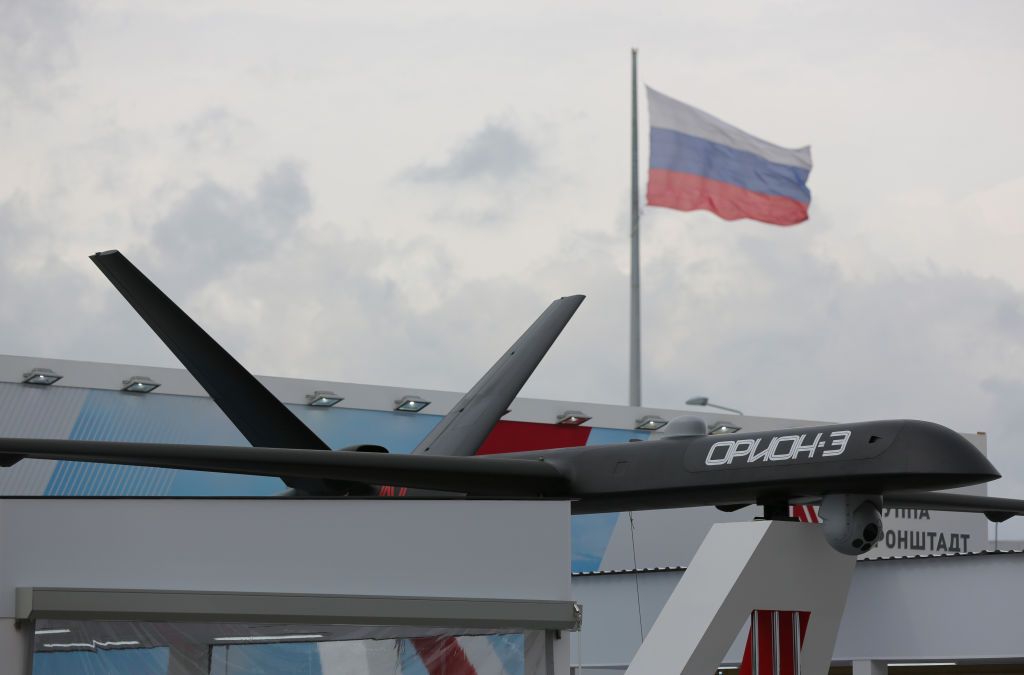
Orions
Russia’s attempt at a medium-altitude long-endurance (MALE) drone is the Orion, which has been produced by the Kronshtadt Group since 2011.
The Orion’s designers modeled the drone off of the American-made General Atomics MQ-9 Reaper drone. However, it turned out much smaller and with a lower altitude ceiling than the American original, as it is equipped with a less powerful engine. While the American Reaper has an altitude ceiling of 15 kilometers (9.3 miles), the Russian Orion can only fly up to 7.5 kilometers (4.7 miles).
The Orion reportedly has a payload, or carrying capacity, of 200 kilograms (440.9 pounds). It includes an optoelectronic sensor for surveillance and other electronic equipment, which leaves little room to carry weapons. The drone can typically carry two guided missiles under its arms and a bomb under its frame.
According to the Kronshtadt Group, the Orion has a flight duration of up to 24 hours – a figure that makes little sense for anything other than reconnaissance missions because of how little room it has to carry weapons.
The Orion was tested for strike missions in Syria back in 2018, after which the Russian Defense Ministry received the first batch of drones for trial operation. The production of Orion drones has since then been hampered by a lack of production capacity, and Kronshtadt only approved the construction of a plant in Dubna, Moscow Oblast, in April 2021.
It’s hard to estimate how many Orion drones the Russian military has, but the frequency at which they’re used at the front in Ukraine indicates that they are not mass-produced. Six Orions have been destroyed since the start of the full-scale war, according to Oryx.
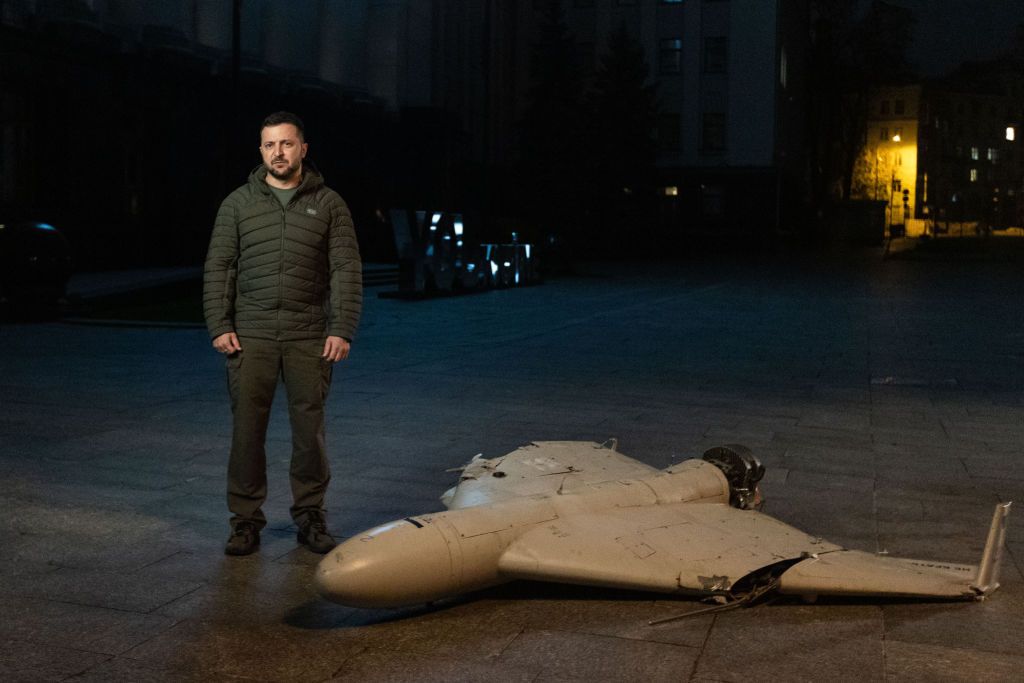
Kamikaze and Iranian-made drones
Kamikaze drones, or loitering munitions, deserve special attention. Kamikaze drones “commit suicide” by loitering around a target area before attacking the target by crashing into it. Because they differ so significantly from traditional reconnaissance drones, we won’t dive too deeply.
We will note, however, that Russia uses two main types of kamikaze drones: the tactical ZALA Lancet and the strategic Shahed-131 and -136. Russia sources Shahed drones from Iran, although it is trying to localize production at a plant in Tatarstan (which the Ukrainian military recently hit with drones). Notably, Shahed drones are used extensively to destroy military and civilian infrastructure in Ukraine, as well as to inflict casualties.
While not a kamikaze drone, Iran also produces the relatively new Mohajer-6, which was first produced in 2018. The Mohajer-6’s engine is comparable to that of the Orion, although its altitude ceiling maxes out at 5.4 kilometers (3.4 miles), rendering it vulnerable to air defense. Unlike the primitive equipment carried by Shahed drones, the Mohajer-6 has a television, thermal imaging cameras, and a laser rangefinder. It can also carry up to four small guided bombs or missiles.
Russia has used Mohajer-6s on the front, mainly in southern and coastal Ukraine. Three have been reported destroyed, with two having fallen victim to Ukrainian air defense and one having crashed in Crimea.
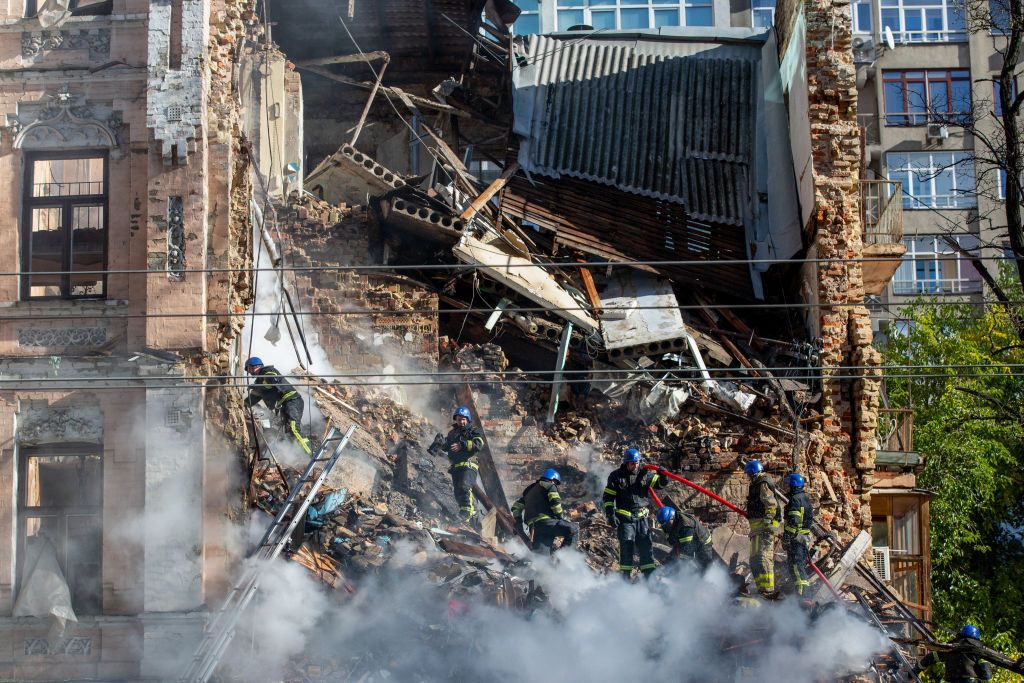
Trends in Russian drone production
There are three main trends in the development of Russian drones amid its war against Ukraine.
First, the Russian military is making an effort to patch up their drones’ vulnerabilities. Alongside traditional means of protection against electronic warfare and other countermeasures (e.g., changing the range of drones’ communication lines with their respective control stations), the Russian military has also been using less traditional methods.
Drones equipped with optical navigation systems, for example, allow the drone to enter a reconnaissance area in “radio silence,” helping them remain undetected by electronic warfare.
Second, there has been an increase in the range of Russian tactical drones – even small ones.
Third, Russia has massively scaled up drone production to supply its troops on the front with as many as possible. This only highlights the importance of supplying Ukraine with more air defense systems to protect the Ukrainian military and civilians alike from Russian drone attacks.
Editor’s Note: The opinions expressed in the op-ed section are those of the authors and do not purport to reflect the views of the Kyiv Independent.




